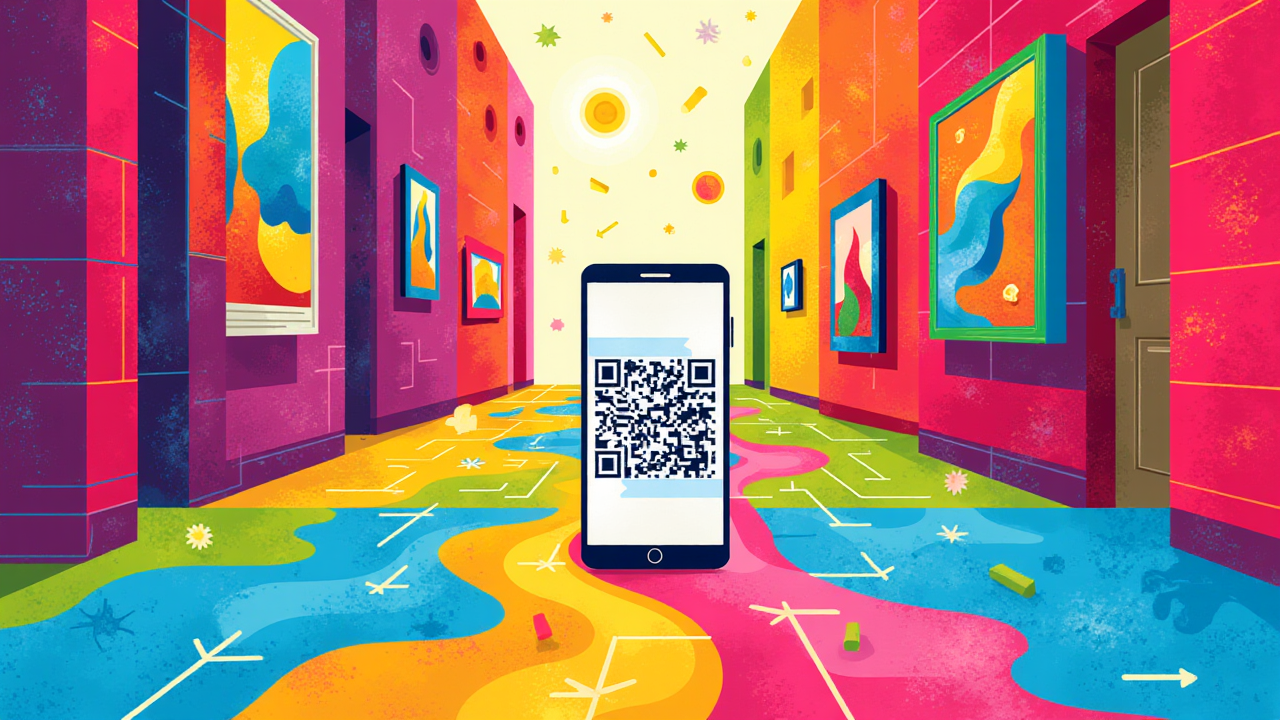No one wants to pause a moment of awe to flip through a guidebook. Visitors crave instant, on-the-spot information that doesn’t disrupt their flow. It’s all about delivering the right info at exactly the right time and place.
One common pain point during visits is the awkward shuffle to find information: squinting at tiny text, fumbling with an audio guide menu, or searching for an exhibit in a brochure index. Select content 24 by clicking 20 times on the down arrow, or just forget about it. All this takes the visitor out of the experience.
59% of people are more likely to engage with museum info if it’s pushed to them contextually on-demand – for example, via a quick QR code scan right next to the artifact they’re curious about,
In fact, 59% of people are more likely to engage with museum info if it’s pushed to them contextually on-demand – for example, via a quick QR code scan right next to the artifact they’re curious about (AAM, Museums on the Move to Mobile 2021). Nearly half of visitors also say they want minimal interruptions as they wander, but would appreciate a digital prompt exactly when a question pops up in their mind. It’s a fine balance: give me guidance, but only when I need it.
This is where simple solutions like QR codes for smartphones can shine. When interest strikes, a visitor points their phone and can get access to a choice of content: a concise summary, a fascinating story, or even a broader choice matching visitors’ interest, and of course their language. Solutions like this are non-intrusive (an uninterested visitor can walk by without being interrupted), and offer full control to the visitor (they don’t need to follow a set tour). While this type of solution can offer text and videos, our 2025 Visitors Survey suggests that audio is preferable to 68% of visitors. The main reason for that is audio can offer context and stories while letting visitors free to look around and experience the place they’ve chosen to visit.
There are other technology approaches to offer the visitor content in the right place and at the right time. In addition to QR code it is possible to leverage NFC technology and geolocation. However our research strongly suggests that for the time being QR codes are the most robust solution.
NFC implementations differ depending on users devices, and present a challenge to be identified by visitors. They are essentially invisible, and require a clear and identifiable sign for the user to tap their device, at which point a QR code can achieve the exact same result without an explanation.
Geolocation on the other hand works reasonably well, but lacks the visual entry point for visitors, risking lower pick up rate. This technology is supported by Spotdot for example, but we typically recommend only using it as a complement to QR codes.
Delivering content at the right moment transforms a visit from good to great. By making information access intuitive and timely, museums and cultural institutions can ensure that sparks of curiosity turn into moments of insight on the spot. The visitor strolls away feeling informed and engaged without ever having their experience interrupted or their questions left unanswered.
